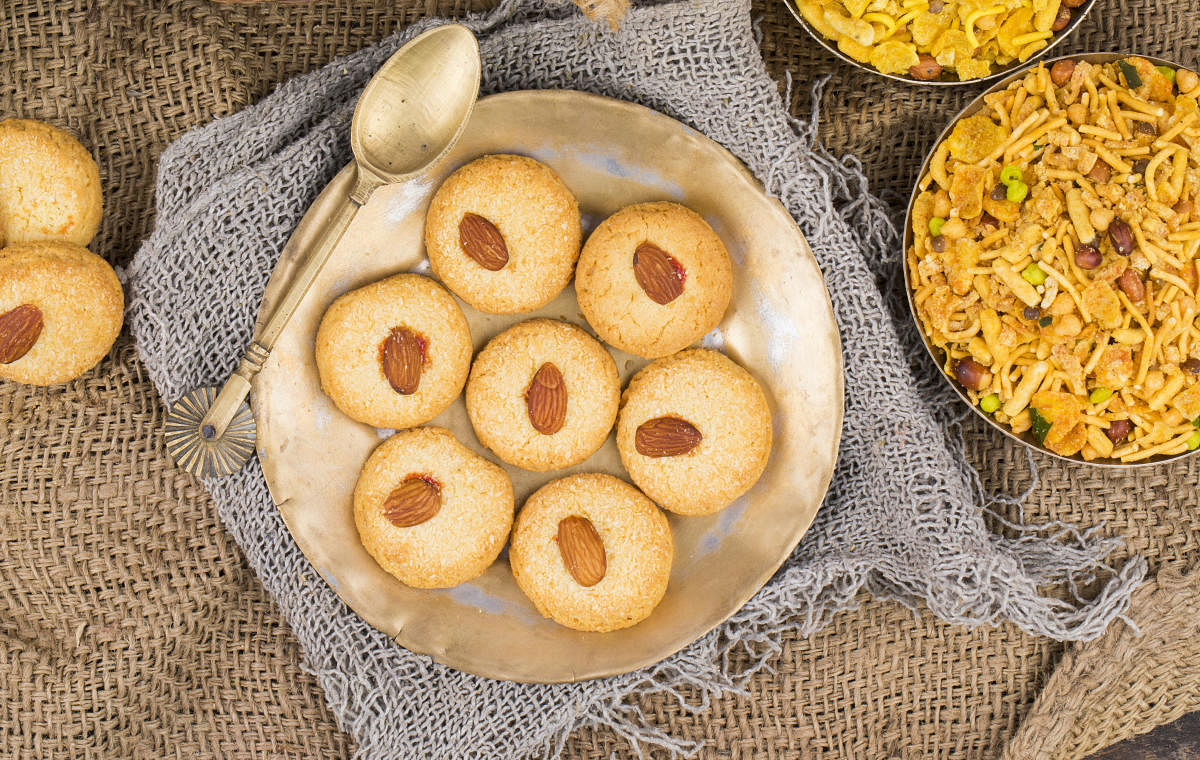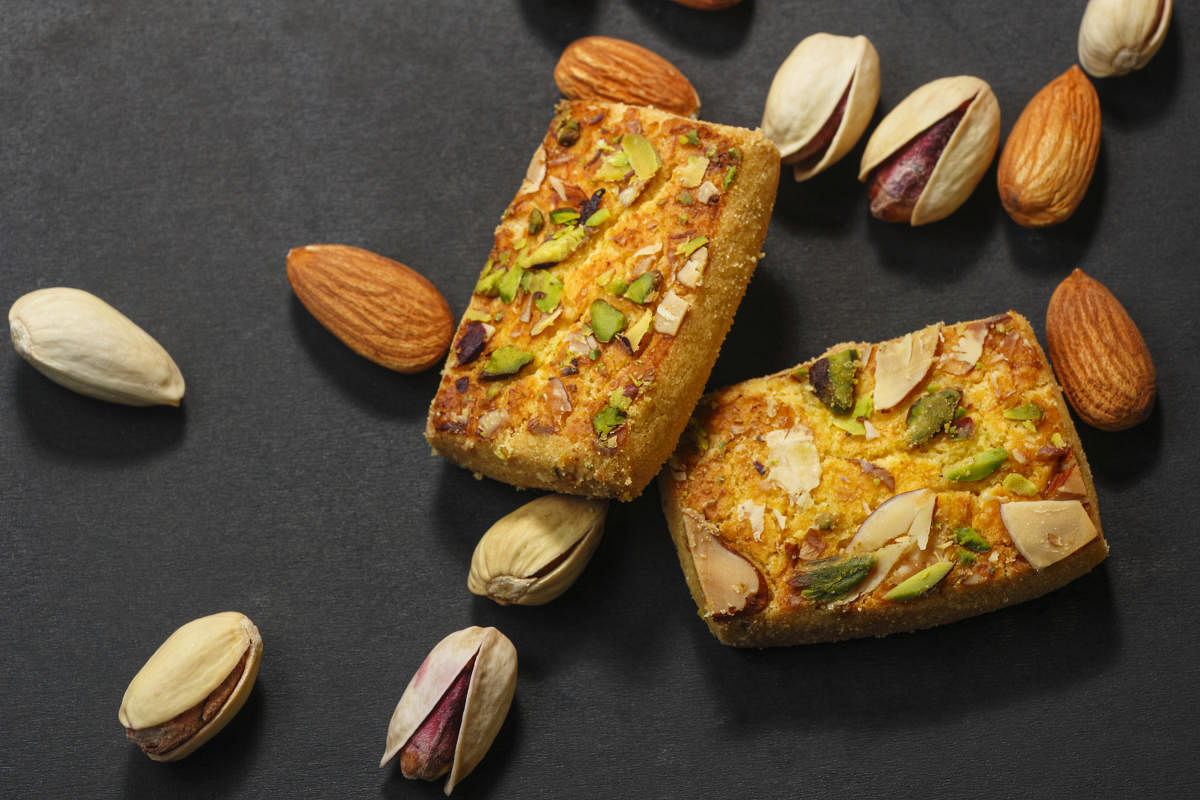

An inseparable part of our chai experience, the saga of the Indian cookies is a delicious ode to the many influences that anchored on our shore, and into our culinary legacy. Biskoot for most of us, perfectly weaves and wafts nostalgia with a sense of familiarity. Come to think of it, the one half of the chai-biskoot pair is perhaps the best satiating introduction to any city’s culture. That explains why every part of India has its own signature biskoot, even if that means adding its own flavours and twist to one that has travelled to the place — like the nankhatai. While all written documents credit the Dutch Koekje to be its inspiration that led Faramji Pestonji Dotivala of the Dotivala Bakery to create the Farmasu Surti Batasa (butter cookies) and which led to the many versions of nankhatai we have in the country including the mused version called the Osmania Biscuit loved by the Nizams, was it how cookies journeyed into India? By all historical accounts, the Dutch are credited for taking the art of cookie making to the world. In India, more so, as they were the first ones to arrive and settle as traders, after the Arabs of course. Hailing from societies that were adept at cookie making (and eating), it was one of the collaterals used as barter. It worked. What gave the Dutch an upper hand to the British who had the Tudor-designed hardtack sea biscuits to exchange was that Koekje was made with flour, oil, warm water, and sugar, had this crumbly texture that was addictive. It was, as port accounts would say, what arrived in the ports of Surat, which soon overhauled the double-baked biscuits’ market that came earlier with traders from Middle East. The fact that it could be made with wheat and had sugar in it made these earlier versions the perfect morning nosh before workers set about their day in the dock. But that was until Dotivala began to rework the wheel to create the crumbly, soft, buttery, and spiced version we know as nankhatai today — a better version of the double-baked naan. But were Dutch solely responsible for creating the cookie range of India that today has the rose cookies called Achu Murukku, the Hyderabadi special Roat, the Karachi Biscuit, Pune’s Shrewsbury biscuits, indigenous Thekua, the unique range of wheat-based coin biscuits and many more? While historians believe that cookies were a technique that came with the colonial settlers, the credit of transforming them to our beloved biskoot goes to the Parsis, and, as per culinary revivalist Chef Sabyasachi Gorai, “to the Arab travellers and the Armenians who made India their final homeland.” The reason for this, says Chef Gorai, “is not only the fact that these communities, thanks to their immigration patterns, knew the skill of both bread making and of baked goodies, but were the original bakery owners as well.” A fact that is corroborated by the bakeries in Udavada and Sanjan where even today Parsi bakers produce not just the good batch of sea biscuits but the finest coconut macaroons as well in ovens that easily date back to the early 19th century. In fact, adds culinary researcher Chef Sharad Dewan, “much of the bakery history that happened around industrialisation, and the trendmakers were immigrant communities whose contribution to our modern culinary chapters were an array of baked goods and especially the biskoot.” What lends credence to Chef Dewan’s view is the prevalence of many iconic bakeries in India that began around the time of industrialisation and have been instrumental in laying the foundation of all things baked that we as Indians like today — be it the pao, the slice bread, the Iyengar cake or the biskoots. Chef Dewan adds that, “sugar, thanks to the Tudors and the Sassanid Empire had become an affordable commodity and it just sky-rocketed the fortune of cookies or biskoot, which turned to be these affordable treats that the British eventually picked to promote the concept of tea not just around the city, but also in Railways where it was served as a combo.” The sweet-loving India palate fell hook, line and sinker to this marketing strategy, and as the chai stalls became a norm, so did the classic combo of chai and biskoot (now not free). It wasn’t the commoners who found this quick snack invigorating, but royals too. As a result, many versions of the cookies spewed over the years. While most, says Chef Gorai, “were basic butter cookies, a recipe perfected by our early bakers, there were a few tweaks in terms of spices and definitely in the lyrical romantic story behind. Take for instance Pune Shrewsbury. While for many it would be a good buttery cookie, for most denizens, this cookie that bears the name of a quaint little English town in the county of Shropshire, is about the fragrant grass that grows there that many old-timers would insist used to be infused into the milk from which the cookie would be made.” But not all cookies that formed the Biskoot-land were buttery, some like the South Indian achappam are an exception. Made of a thin batter of rice flour, eggs, whole milk, and sugar, the rose-shaped cookie was fried and a stencil was used to give it that shape — a trick that existed in India when the Muziris were populated by the Arab traders. Of course, many believe that it is the Indian version of Buñuelos de viento, which was learnt by the Anglo Indian cooks from the French chefs who came to India during the colonial times. However, the existence of cookies like the Thekua points to the other theory where it could be a technique that came from the court of Persia. According to Oxford Companion to Sugar and Sweets, the art of buttery cookie making began during the reign of the Sassanid Kings who were extremely fond of food and played a key role in developing techniques for refined sugar. It was in their court that the oldest iteration of sweetmeats was designed and called Ron Khwartig. Translated as a sweet pastry, it led to the creation of Paludag, a pudding made with refined sugar, flour, cornstarch, and apple/quince juices; and Khush Kananaj, a drier version that is said to be the oldest cookie.
Persia, which for a long time remained the melting pot of culinary cultures and the receptor of the finest ingredients in the world from where new dishes and techniques travelled the world, also gave the world cookies.
Like most dishes that have travelled to India, the cookie too underwent changes before arriving on our ports where it eventually transformed into the biskoot that partnered the chai, a tradition that was introduced by the Britishers who loved their afternoon tea ritual with a plate full of crumbly goodness.